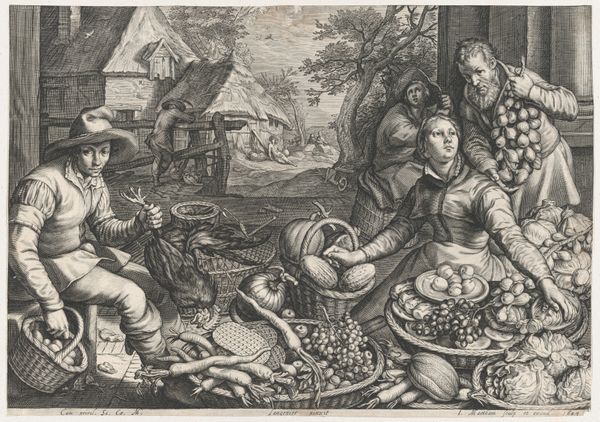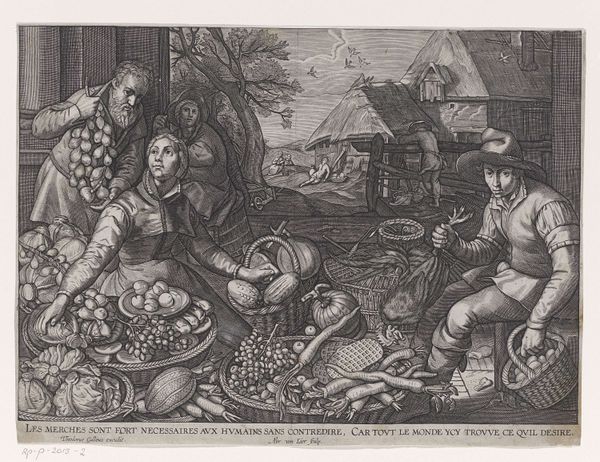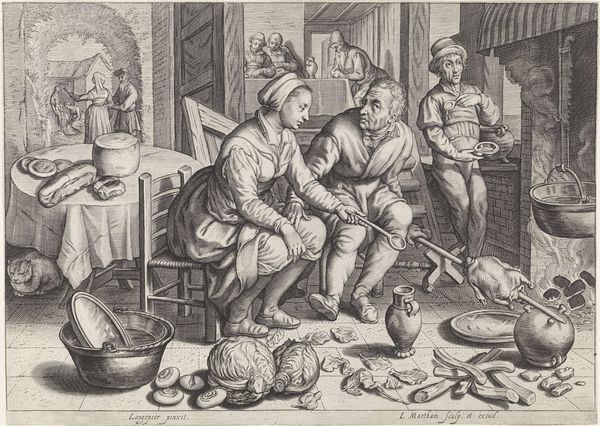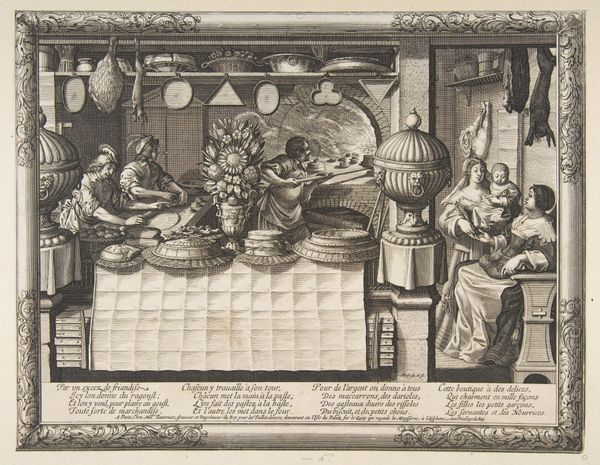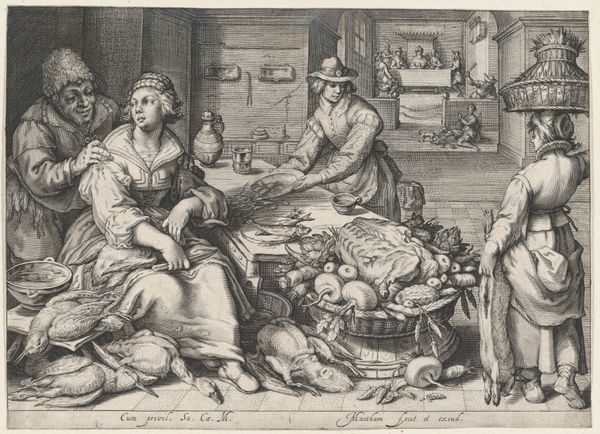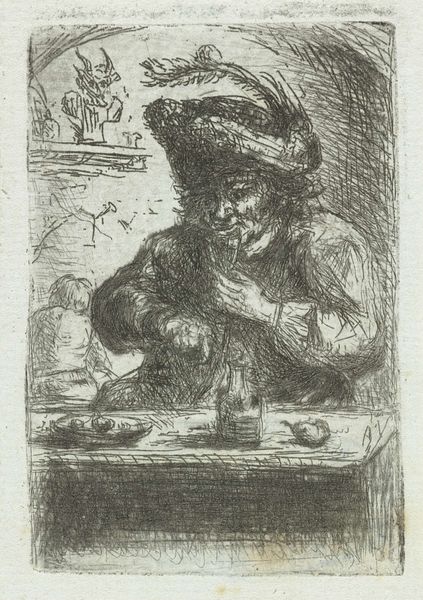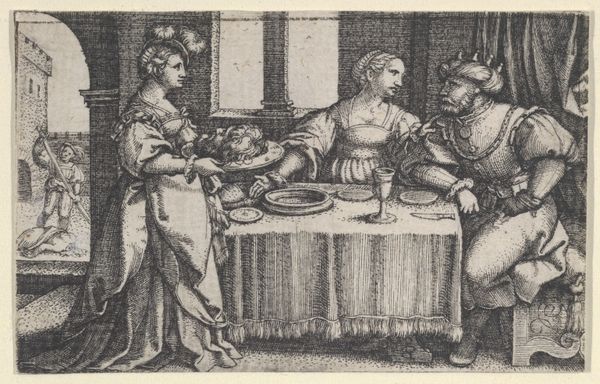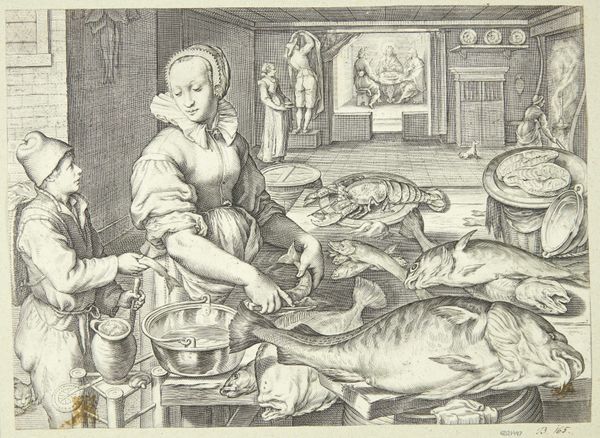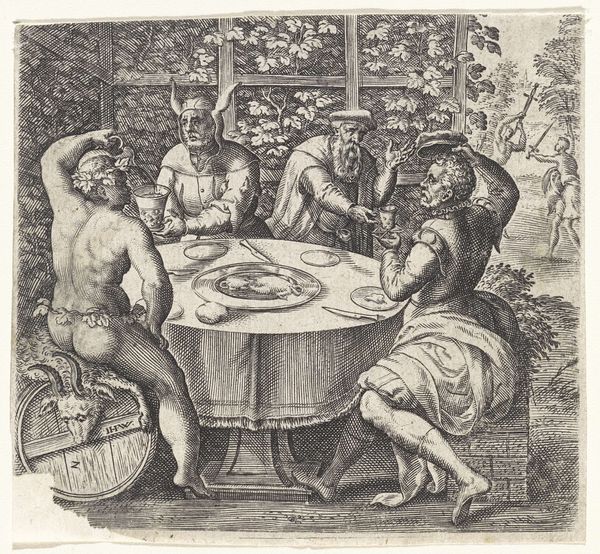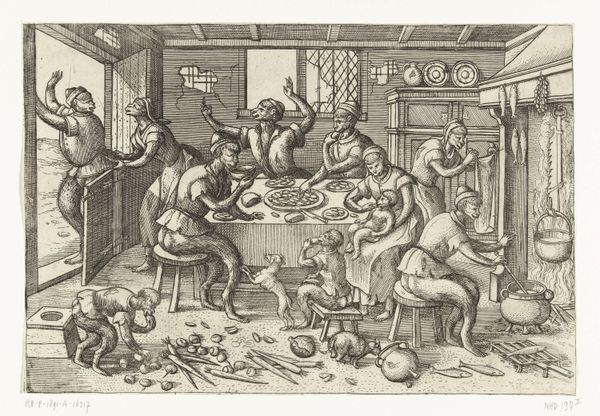
oil-paint
#
baroque
#
dutch-golden-age
#
oil-paint
#
oil painting
#
vanitas
#
genre-painting
#
realism
Copyright: Public domain
Editor: Here we have "Still Life," an oil painting possibly by Pieter Claesz, painted during the Dutch Golden Age. The arrangement of food and drink has this sense of momentary pause, like someone just stepped away from the table. What do you see in this piece that stands out? Curator: I am particularly drawn to the dynamic interplay of light and shadow. Notice how Claesz employs a limited palette to create a powerful illusion of depth and texture. The specular highlights on the metal surfaces and glassware contrast exquisitely with the muted tones of the foodstuffs, contributing to a visually stimulating experience. Consider how the artist manipulates our perception through subtle tonal shifts. Editor: The textures are remarkable. But what does the overall composition signify, in your view? Curator: Compositionally, the work strikes a delicate balance. Claesz orchestrates the diverse objects – fruits, meats, vessels – within a pyramidal structure, achieving a harmonious integration. Now, analyze the relationship between the objects themselves. Observe how the artist juxtaposes perishable items, like fruit, with more durable objects such as metal and glass, hinting at a semiotic discourse of temporality. Editor: So, it's less about the food and more about how it's arranged and what those relationships suggest? Curator: Precisely. Claesz directs the eye across the canvas using linear arrangements of objects, further anchoring the structure. Can you also notice the tension created by objects extending beyond the picture plane and the impact of implied lines? Ultimately, our interpretation depends on discerning this interplay of forms, colors, and light—all conspiring to stimulate perception. Editor: This really has me thinking about how an artwork’s physical qualities carry meaning. Thanks! Curator: My pleasure! Studying the interplay between the art objects opens our eyes to greater understanding and appreciation.
Comments
No comments
Be the first to comment and join the conversation on the ultimate creative platform.

